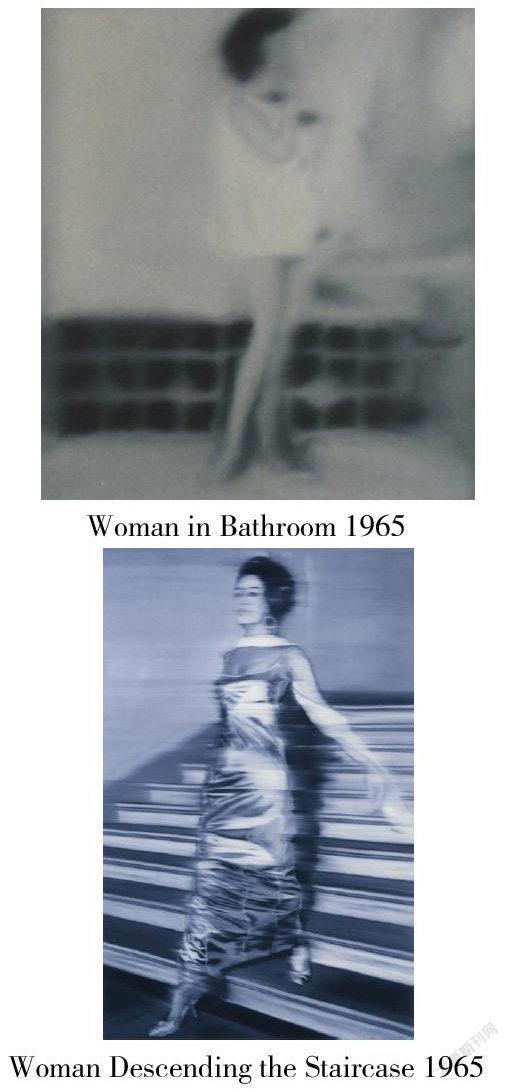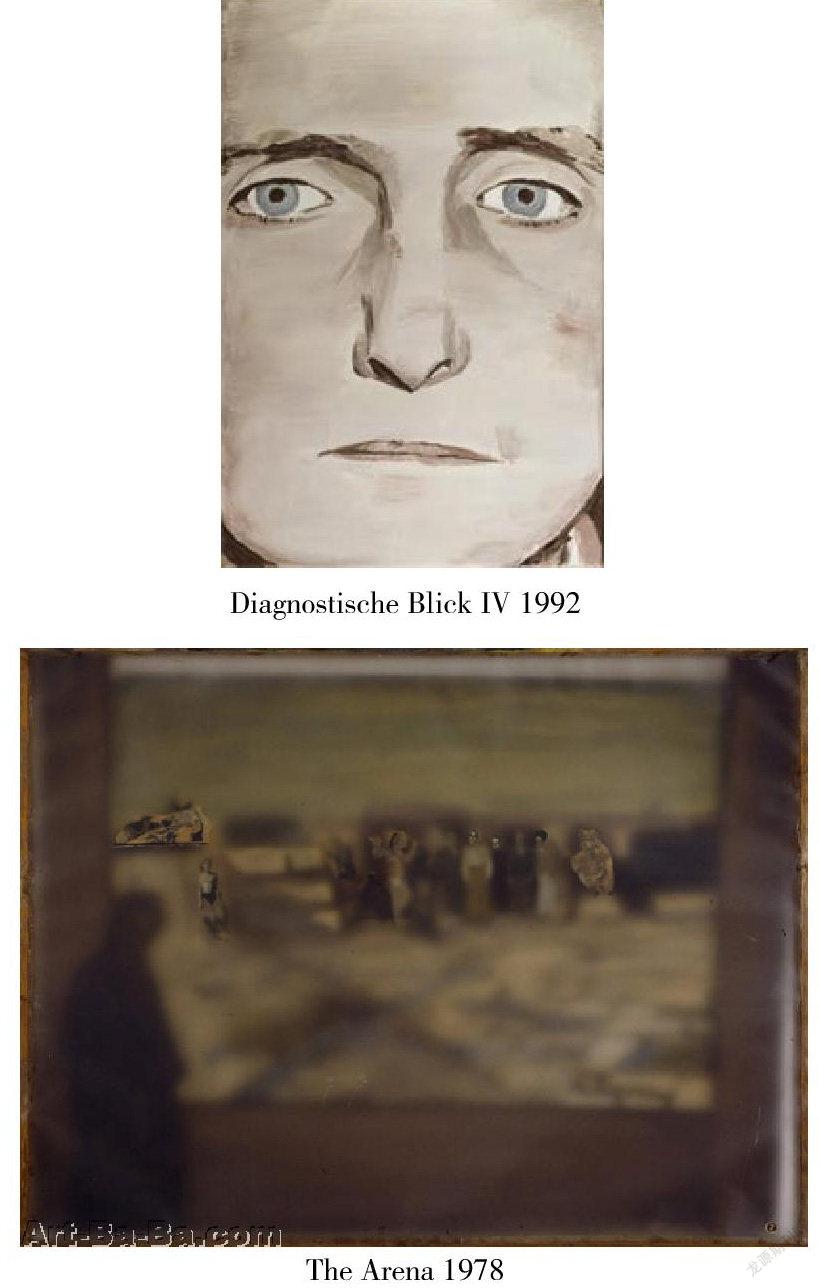About Painting with Photographic image
2019-09-10姚姗姗
姚姗姗




“Seeing comes before words. It is seeing which establishes our place in the surrounding world; we explain that world with words, but words can never undo the fact that we are surrounded by it.” (2008, p.7)
Photographic images have come to increasingly govern the lives of human beings. Taking photos and downloading images have become such simple things that almost anyone can do it. People think they control their lives by frequently documenting what they do through photography. People perceive the real world through the world they see in photographs, for example, in social media, advertising and the internet. As Susan Sontag wrote in ‘On Photography’: “The inventory started in 1839 and since then just about everything has been photographed, or so it seems.” (2014, p.1) In contemporary society people experience a mass of visual information. Every single picture saves a moment and people feel that when they save the moment they have keep that time still forever. Photography has changed contemporary society; it has also changed the art world. Since the invention of photography, painters have made work based on photographs.
The main interest of this paper is to consider the relationship of the representation of photographic images in painting and how artists deal with photographic images more generally. The paper also provides examples of artists whose works are based on photographic images and who use photography as both a reference and as a physical object, for example, through collage. To begin with, the paper focuses on the idea that painters reconstruct photographic images by consciously or unconsciously editing them, to remove or repeat certain parts.
Much of Gerhard Richter’s work has an obvious characteristic that is taken from photographs. The themes he choses are quite wide, some images come from daily life, some from the goods in advertising posters. Some are snapshots from family life others are landscapes taken from postcards. Some are based on current affairs news media, celebrity photo portraits, encyclopedias as well as newspapers and magazines etc. He often chooses seemingly mediocre or even out of focus snapshots. These random photos can show a more natural state, that seems more vivid. His paintings are mostly of ordinary people, everyday surroundings or media images, and this is obvious in the paintings. It is even possible to identify the sources of many of the images. Richter maintains a proper distance between his paintings and the original photographs - he does not simply copy the image. The paintings use a fuzzy, out of focus style and often a pure grey tone in his painting language to represent the distinguishing features of photographs, and assimilate them into his work. This means the painting’s blur effect gives rise to feelings of unfamiliarity and alienation in the viewer altering and transforming the meaning of the source photographs.
Like Richter, many painters often choose to edit the things they consider to be unnecessary in the reproduction of photographs in paint. They might try to avoid an obvious narrative in the painting so that the audience can make up their own independent thoughts on the subject depicted and also experience the essence of the painting language and the process and materiality of paint. Painting is not limited to the realistic representation of objects.
In Richter's most important series of paintings: ‘18 October 1977’ (1988) the artist depicted the result of his fascination with terrorist group the Red Army Faction, which had been active in Germany since the beginning of the 1970s. The group tried to draw attention to their grievances about capitalist society by means of armed robberies and bomb attacks. The leading members of the first generation of the group were arrested in 1972. Their terrorist activities, their unparalleled pursuit by the police force and their joint suicides provoked heated discussion in Germany for a long time. More than ten years later, Gerhard Richter chose to approach the subject in his work, explaining his reasons as follows: “The deaths of the terrorists, and the related events both before and after, stand for a horror that distressed me and has haunted me as unfinished business ever since, despite all my efforts to suppress it”. (2009, p. 202)
We know that when the human eye is viewing something it is an extremely complex process. When the human eye first comes into contact with an image, the brain will generally have a process of deconstruction and recombination. Then restructure the color and frame the image. But often this process is carried out unconsciously.
Unlike the photographs, the paintings refused to directly describe the history or the recent political events. They can’t reveal the past, however, they can comment on the past in some way. Technically fuzzy, Richter’s paintings can be seen as being something about memory, something which he has chosen to remove from the reality. Consider the fact that when people try to remember something, they may find it hard to view it from memory. And when inconsequential information has been blurred, the painting starts to be seen clearly. Or perhaps the audience may experience the work through a kind of blurred lens. As an artist reviewing these events, he takes a different position to politicians or the public or the media. With his editing, he doesn’t want to try to lead the public to a particular viewpoint. In contrast, he is working with famous video footage in the history of Germany and he was offering the possibility of letting the public treat it in a neutral way, to regard this intense period in a different way so that people can refresh their thinking. With the pure grey tone, which Richter used, he showed to people that the reality isn't a simple black and white affair, there are also grey areas. Sometimes removing things can make things clearer.
The process of editing the images brings a whole new visual experience consciously or unconsciously. Sometimes repeating selected parts of the images introduces more subjectivity into the work. Painters (partially consciously) select what they need to emphasize the main demands of their artistic purpose, and thus can more accurately express their feelings and intentions.
According to Rudolph Alheim’s thesis ‘Visual Thinking’ (2004), visual perception is not only the record of the passive process of physical stimulation, but the brain’s subjective and active involvement, and its ability to select. In ‘Art and Illusion’ (2000), Gombrich holds similar views. He thought that seeing is always a positive process. Limited by people’s expectation, discussing seeing and finding are more meaningful than seeing and knowing. Only when people are looking for it, it will be found. Therefore we need to enrich our visual experience through reading larger number of words and image text, and be sensitive to images and the things around us. Meanwhile, the appearance of so much media imagery extends our visual range from a macroscopic aerial view to a microscopic map of human life.
For example, the Belgian artist Luc Tuymans, borrowed images from the media, creating and combining a range of different styles and subject matter. He never denied that he painted from “photographs”, his work is made through a seemingly casual way of reproduction. The themes he chose to paint are wide. We are impressed by his casual way of painting and the very pale figures depicted. In his portrait paintings, he often shows the characters in partial close-up. He picks the images he needs, enlarges the image, and through his approach to color the figures’ faces often look overexposed. He seems interested in specific parts of the human face, but won’t just focus on the details such as those war-torn faces, pale and almost pathological body parts etc. In Diagnostische Blick IV (1992), the figure's face is pale and weak, we can barely see the trace of color of the skin. The character’s eyes are revealing a unique apathy and feelings of helplessness. The source photographs are from a terminally ill patient, Tuymans was obviously concerned with the morbid and debilitating situation they were facing. He is concerned with the illness status rather than the disease itself. Tuymans, through repeating selected parts of these images, imitates the image with a vague way with his painting process. Through his flat painting style, he creates a sense of desolation and a sort of fuzzy feeling in his work. In The Arena (1978), the artist intentionally blurred characters or events to make it all unrecognizable. The painting feels like it is based on a film or video, the frame seems to be an accidental element in the painting. This imitation is the effect from the blurring, out of focus appearance. As it is the artist's attempt to restore the real event itself, in the historical events, the image is just a cool spectator, which is the certain part he keeps repeating.
Whether we admit or not, photographic images play an important role in the structure the paintings. However, there are advantages and disadvantages in this seemingly "handy" convenience, it implies a drawback in painting that some of painting and drawings are becoming more photographic. When we are facing a massive image data, how can we find the resources we want? It requires painters to have a rich visual experience and ability to decide which picture should be selected. In this way, painters can give the audience a sensory experience beyond the image surface to achieve the best expression intended. The challenge of modern painting is how to effectively to use the image to express the artist's ideas and intentions through using various methods. Especially in today's society in the face of the sharp increase of a variety of image resources, it requires us to lively frame and selection. Painters reconstruct photographic images by consciously or unconsciously editing them so that they become the artist's self-expression and self-selection. They have the capability to control the whole structure which is particularly important, and make a personal style approach to create a photo-based artwork. Painters who make works based on photographs, focus on rebuilding the image to excavate deeper meaning from the surface of the photograph. This is certainly one of the advantages of using photographs. But in today’s overflowing image mass media era, we can put photographic images to good use in art. But maintaining a considerable vigilance is even more important.
Bibliography:
[1]Berger, J. (1972) Ways of Seeing. Green Penguin
[2]Gombrich, E.H. (2000) Art and Illusion: A Study in the Psychology of Pictorial Representation. Princeton University Press
[3]Berger, J. (1980) About Looking. Bloomsbury
[4]Barthes, R. (2010) Camera Lucida: Reflections on Photography. Farrar, Straus and Giroux
[5]Sontag, S. (2014) On Photography. Penguin UK
[6]Arnheim, R. (2004) Visual Thinking. University of California Press
[7]Benjamin, W. (2008) The Work of Art in The Age of Mechanical Reproduction. Penguin UK
[8]Richter, J. Elger, D. Obrist, S. (2009)November – December 1988 in: Gerhard Richter: Text. Writings, Interviews and Letters 1961–2007.Thames & Hudson.
